 The late Rodney Gooch donated 200 works to the Riddoch Gallery in 1998, gathered during his two decades long involvement with the Utopia community in central Australia.
The late Rodney Gooch donated 200 works to the Riddoch Gallery in 1998, gathered during his two decades long involvement with the Utopia community in central Australia.
Utopia is a tract of land located some 240km north-east of Alice Springs. Named by white pastoralists who settled there in the early 1920s, it encompasses the traditional country of Eastern Anmatyerr and Alyawarr people, who in 1980, following a successful land claim under the Aboriginal Land Rights (Northern Territory) Act of 1976, were granted freehold title to it.
People at Utopia today live in small communities or outstations and lead semi-traditional lives; making art is a major source of income. Works reflect intimate knowledge of the land, its flora and fauna and customary law associated with it. Like much Indigenous art produced in remote Australia today the designs are of profound cultural significance for their creators and extended familial networks.
Originally from the foothills of Adelaide, Rodney Gooch settled in Alice Springs in his early 30s. In 1987, through the Central Australian Aboriginal Media Association (CAAMA), he became art advisor to the remote community of Utopia. Following this appointment, Gooch continued to work closely with the artists of Utopia and was ultimately engaged with the production and sale of art from the community to the wider world for a period of 15 years.
The Riddoch’s Rodney Gooch Collection includes works such as Mavis Mpetyane’s painting of Country, from 1994; Lindsay Bird Mpetyane’s triptych of Snake Ancestor Country from 1998; Janie Mpetyane’s Water Dreaming from 1991.
The Collection also includes works in silk batik, such as Kathleen Petyarre depicting Awelye, women’s ceremony, a highly patterned work with ceremonial figures dancing within the flora and fauna of the country.
Emily Kame Kngwarreye, perhaps the star of the collection, also worked in batik for many years until, well into her seventies, when she painted her first work of acrylic on canvas in 1988–89. Her natural style and flair flourished in this medium and she became one of the most internationally recognised Aboriginal artists. The subjects of her paintings include bush foods such as wild yam (kame means yam seed, her principal Dreaming), as well as awelye (body paint designs or ceremonies). This series of works, painted at her homeland, depicts designs that women paint on the top half of their bodies in traditional ceremonies. She is represented in the Collection by an untitled painting of 1993, also beads, jewellery, as well as a painted compete car door.
Hazel Kngwarreye has two works that detail life at Utopia, Kurdaitcha Wives Story 1996 and Utopia Massacre Scene 1998.
Sculpture is also well represented in the Rodney Gooch Collection. The Utopia artists have sculpted in wood human figures, animals, heads and dishes, and painted them with synthetic polymer paint. This part of the Collection also includes papier-mâché dancers with wild woollen hair.
The Collection has been enriched by Nicholas Adler’s 82 photographs of the Utopia artists.
*PLEASE NOTE: The Riddoch’s Rodney Gooch collection is not on permanent display. Pieces may be curated into exhibitions from time to time – please check the list of current and upcoming exhibitions for further details.
The book Gooch’s Utopia: Collected Works from the Central Desert by Fiona Salmon, is available for purchase in the Riddoch Gallery Gift Shop.



